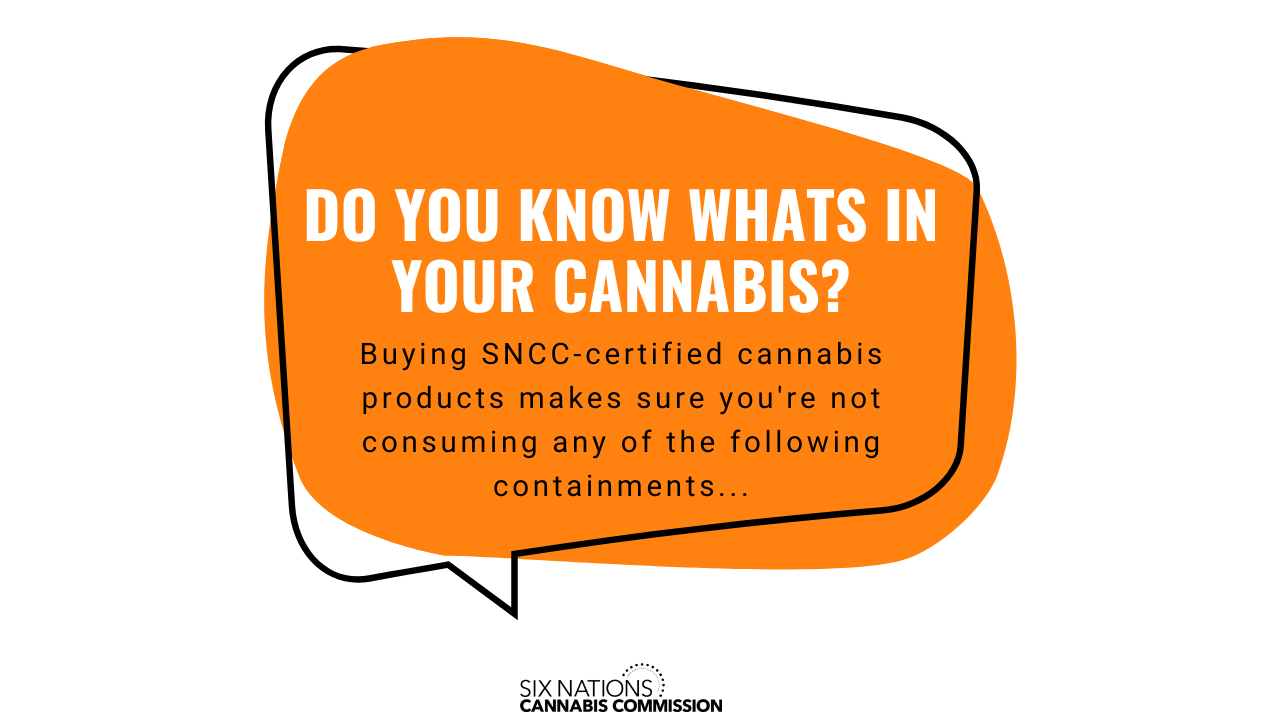
Knowing exactly what’s in your cannabis products is the first step to knowing its safety for consumption, which is why SNCC-certified products are thoroughly tested before receiving a stamp of approval.
Buying SNCC-certified cannabis products makes sure you’re not consuming any of the following containments…
Microbes
- Cannabis plants and products can pick up molds or bacteria while growing (particularly if they are grown in an unsanitary environment) or during handling and processing.
- Most molds are harmless, but some may present a health threat when inhaled.
- Cannabis microbe contaminants that can result in infections include…
- Aspergillus and Penicillium species
- Fusarium Oxysporum
- E. coli
- Salmonella
- Clostridium.
Plant Growth Regulators (PGRs)
- A variety of chemical agents are used during cultivation to encourage growth and reduce pests, including fertilizers and pesticides
- PGR cannabis grown with synthetic plant growth hormones has been linked to adverse health effects, including increased cancer risk.
- Synthetic PGRs may be carcinogenic and therefore are not appropriate for human consumption, cannabis grown with natural PGRs does not pose the same health risks.
- Cannabis Plant Growth Regulators that can result in adverse health effects include…
- Chlormequat Chloride
- Daminozide
- Paclobutrazol
Heavy Metals
- The cannabis plant is a hyperaccumulator, which means it easily absorbs metals that may be present in the soil or growing medium or from fertilizers.
- Heavy metals are proven to be a health threat to humans when consumed.
- Metals that have been found in cannabis and/or cannabis products include…
- cadmium (a carcinogen)
- lead (a neurotoxin)
- mercury (a neurotoxin)
- and arsenic (an endocrine disruptor and carcinogen)
Solvents
- Solvents may be used to extract cannabinoids from the cannabis flower and are the basis of creating cannabis concentrates. While safe to use, cannabis products that haven’t properly disposed of the solvents can be dangerous for consumption.
- The issue of solvent contamination is particularly important for cannabis concentrates that are inhaled.
- The most commonly used solvents are…
- ethanol
- carbon dioxide
- butane
- and propane.
Other Contaminants
- If good practices are not followed, a variety of plant, metal or other materials can be introduced to cannabis during the time of growth, storage, or production such as:
- machine oils or parts
- insect parts
- rodent droppings
- ash
- and more
- In some cases, foreign matter may be deliberately added such as:
- illicit drugs
- Glass
- perfumes
- and more
Six nations community members can be confident in purchasing SNCC-licensed products, knowing that they have been thoroughly tested for any possible containments and are certified safe for human consumption.
Sources:
DeGroote, M. G. (2021). Contamination of Cannabis Products for Human Consumption. McMaster University, Centre for Medicinal Cannabis Research.https://cannabisresearch.mcmaster.ca/docs/default-source/knowledge-syntheses/mgdcmcr_cannabiscontamination.pdf
Seltenrich, N. (2019). Cannabis contaminants: Regulating solvents, microbes, and metals in legal weed. National Institute of Environmental Health Sciences. https://ehp.niehs.nih.gov/doi/full/10.1289/EHP5785

